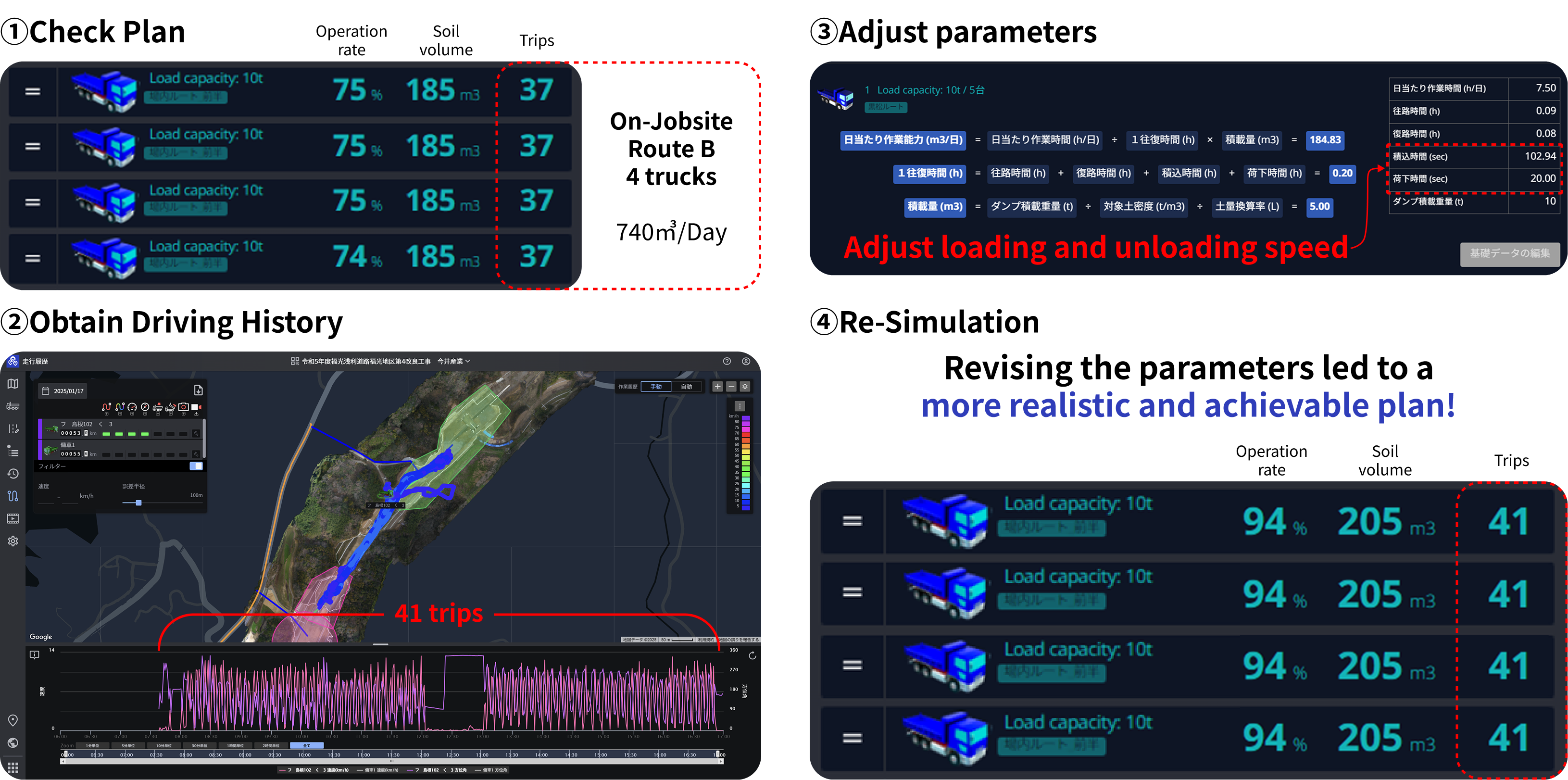
Plan optimization driven by dump truck driving history
Data-Driven Simulation for Realistic Planning


IMAI CORPORATION is a comprehensive construction company based in Shimane Prefecture, engaged in civil engineering, architectural construction, real estate, and recycling businesses. With a strong commitment to contributing to the local community, the company leverages the region’s rich natural resources to pursue a sustainable future. Through construction technologies, real estate development, and environmental preservation, IMAI CORPORATION continues to grow together with the local community.
Location
Shimane prefecture, Japan
Customer Type
General Contractor
Project Type
Road

Issues
In large-scale civil engineering projects involving multiple contractors, regular progress meetings on soil distribution are held, where each company reports its progress based on the number of dump trucks used. However, this reporting method often leads to coordination issues—for example, a jobsite scheduled for soil transport may suddenly become unavailable, or a jobsite capable of receiving soil may no longer be able to do so. These disruptions frequently cause work stoppages due to poor coordination between jobsites.
In response to these challenges, IMAI CORPORATION, a general contractor based in Shimane Prefecture, recognized the need for more accurate data sharing and progress management—not only within its own work zone but also across other zones—to eliminate inefficiencies and maximize productivity.
To address this, IMAI CORPORATION used「Smart Construction Simulation」to run simulations and verify the validity of its construction plan, then created an improved version. (See details here ←)
However, to further narrow the gap between simulation results and actual jobsite conditions—and enhance planning accuracy—it became necessary to collect actual dump truck driving history and incorporate it into the simulation.

Solutions
Driving history was obtained using Smart Construction Fleet. 「Smart Construction Fleet」 is a service that automatically records driving history, loading and unloading times, and the number of trips by either installing a dedicated device on dump trucks or placing a smartphone with the dedicated app inside the vehicle. In this initiative, the construction plan was refined through the following four steps.
For example, the initial plan estimated 37 trips by four 10-ton dump trucks on Route B within the jobsite, but the actual transportation data showed 41 trips. To align the simulation result (37 trips) more closely with the actual performance (41 trips), conditions such as loading and unloading times were reviewed, and the simulation was rerun. As a result, a revised plan was produced that more accurately reflected real-world conditions and closely matched the actual number of trips.

By refining the plan based on actual performance data in this way, it becomes possible to minimize the gap between the initial plan and actual jobsite operation. Furthermore, this approach enables highly reliable and smooth responses to future plan revisions or schedule adjustments.











